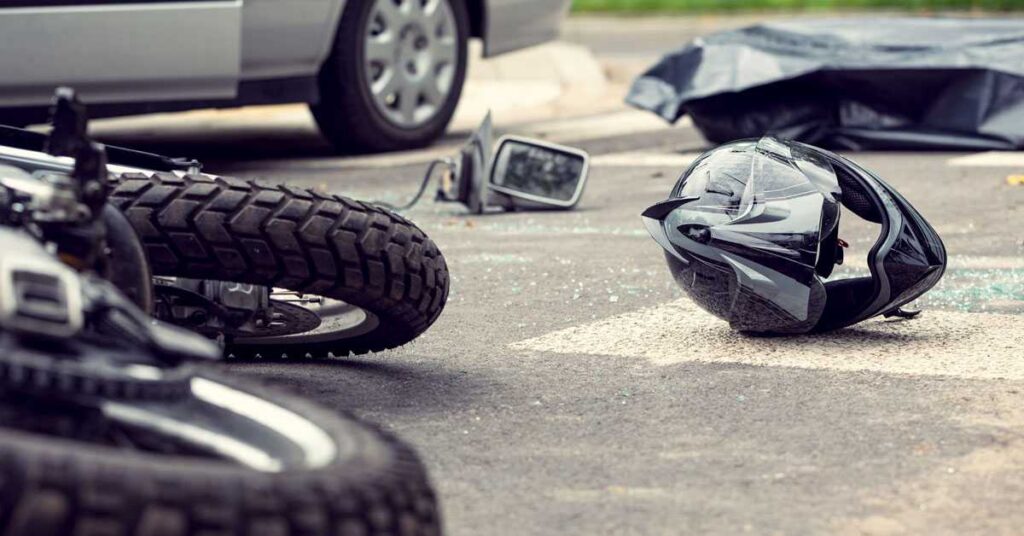Motorcycle crashes in the San Fernando Valley tend to unfold in a heartbeat and linger for months or years in the form of medical bills, lost work, and disputes with insurers. Riders often face a different reality than drivers after a collision, from unique bias in liability assessments to the challenge of proving visibility and right-of-way in a fast-moving environment. This piece clarifies what happens after a serious crash, how fault is sorted out under California law, and why thorough documentation matters just as much as medical treatment. You’ll find practical guidance on preserving evidence, understanding insurance hurdles, and building a claim that accurately reflects the full scope of your losses. For bilingual support and local advocacy, firms like https://hht-law.com/ can connect injured riders with attorneys and Abogados Accidentes Motocicleta who understand the Valley’s roads and courtrooms.
Common Motorcycle Accident Scenarios in 2025 California Roads
Every year brings new traffic dynamics, and 2025 is no different for California riders navigating freeways and canyon roads in and around the San Fernando Valley. Intersection left-turn crashes still rank among the most dangerous, especially when a driver misjudges a motorcycle’s speed and cuts across the rider’s path. Lane splitting remains a lawful practice when done safely, but congestion waves, distracted driving, and sudden lane changes can combine to create “pinch” hazards between vehicles. Road surface issues—from post-storm potholes to gravel kicked up by construction zones—continue to trigger low-sides and high-sides, particularly for riders on worn tires or unfamiliar bikes. Add in an uptick in delivery vans, rideshare vehicles, and automated driving features, and you get complex crash scenarios where human error and machine assistance sometimes collide.
How present-day traffic conditions amplify risks
The Valley’s mix of wide freeways and tight canyon roads magnifies risk in predictable ways. Freeway merges and exits concentrate abrupt speed differentials, while canyon blind curves leave little margin if a car drifts over the centerline or debris accumulates after heavy winds. Dooring incidents persist in busy commercial corridors, where drivers fling open doors without checking mirrors and riders filtering forward have no time to react. Night riding after late shifts or weekend events also heightens exposure, as diminished visibility and impaired drivers create conditions where even defensive maneuvers can’t avoid impact. For Spanish-speaking riders and families seeking guidance after such collisions, Abogados Accidentes Motocicleta with Valley experience can identify scenario-specific evidence—like merge-angle photos or construction notices—that proves what really happened.
The Importance of Helmet Laws and Rider Safety Compliance
California’s universal helmet law requires both riders and passengers to wear helmets that meet federal safety standards, and courts take compliance seriously in injury cases. Wearing a DOT-compliant helmet not only reduces the risk of catastrophic brain injury; it also undermines defense arguments that a rider “failed to mitigate damages.” Insurance adjusters will scrutinize not just the presence of a helmet, but also its condition, certification labels, and whether it appeared properly fastened at the time of the crash. Beyond helmets, jackets with CE-rated armor, abrasion-resistant pants, gloves, and boots can demonstrate that a rider took reasonable steps to minimize harm, which can be pivotal in negotiations. These details matter because settlements often hinge on whether an insurer can plausibly argue that some portion of the injuries was preventable.
Documenting compliance to strengthen your claim
Evidence of compliance starts with photographs: clear images of your helmet, protective gear, and any visible damage right after the collision. Keep purchase receipts or bank statements for safety equipment, and preserve packaging or certification stickers that show DOT or ECE ratings. Maintenance records—tire changes, brake checks, and chain adjustments—help demonstrate that the motorcycle itself was in safe operating condition, reducing the chance that an insurer can shift blame to mechanical neglect. Training certificates, such as Motorcycle Safety Foundation course completion, and data from dashcams or GPS apps can further support a narrative of conscientious riding. If you need help assembling and presenting this evidence, Abogados Accidentes Motocicleta who regularly assist injured riders know how to line up proof so adjusters and jurors see compliance as clear and credible.
Determining Fault Between Riders and Negligent Motorists
California applies pure comparative negligence, which means fault can be divided between parties in any percentage, and your compensation is reduced by your share of responsibility. Determining who caused a crash demands more than opinions; it requires physical evidence, reconstructed timelines, and careful reading of the Vehicle Code. Left-turn collisions typically implicate a turning driver’s duty to yield, while rear-end impacts suggest following too closely or inattention, especially when a rider is stopped at a light. Lane splitting is legal in California when done prudently, and riders are not automatically at fault simply because they were between lanes; investigators still look at speed, traffic flow, and the actions of the merging driver. The nuances of sightlines, sun glare, and road design can all play a role in how liability is ultimately allocated.
Proving negligence with modern evidence
Building a strong liability case starts at the scene and continues for weeks after. Photos and videos documenting final vehicle positions, scrape marks, and debris patterns create a visual map that supports expert reconstruction. Event data recorders from involved cars, dashcam footage, and telematics apps can reveal pre-impact speeds, braking, and steering inputs that confirm negligent maneuvers. Phone records may show texting or calls moments before the crash, while witness statements can fill in gaps about lane changes, turn signals, and headlight use. Because defense teams often lean on stereotypes about motorcyclists, having a disciplined evidence strategy—often guided by seasoned counsel or Abogados Accidentes Motocicleta—helps counter bias and refocus attention on rule violations by inattentive drivers.
Insurance Challenges Unique to Motorcycle Injury Claims
Motorcycle claims often run into insurer skepticism, smaller policy limits, and complex valuation disagreements. Some carriers still treat riders as inherently risky, pushing low offers based on assumptions rather than evidence. Medical payments coverage is less common for motorcycles than for cars in California, which can push immediate bills toward health insurance or hospital liens, creating tangled negotiations later. Custom parts and gear complicate property damage valuations, as adjusters may overlook high-end upgrades or apply improper depreciation to helmets and armored apparel. Uninsured and underinsured motorist coverage is crucial in the Valley, where serious injuries can easily exceed a negligent driver’s liability limits, particularly when surgical care, rehabilitation, and lost earning capacity are involved.
Strategies to counter insurer tactics
Anticipating adjuster tactics is half the battle. Provide organized documentation of medical care, wage loss, and functional limitations to eliminate ambiguity that invites lowball offers. Prepare a clear property damage packet with receipts and before/after photos for aftermarket parts, along with market comparables for your specific make, model, and customization level. Track all out-of-pocket costs, including rides to therapy, co-pays, and replacement safety gear, so none of your recoverable damages are left off the table. When an insurer downplays injuries or disputes causation, obtain treating-physician narratives and, if necessary, independent specialist opinions that tie your symptoms to the crash. For riders seeking experienced guidance, resources such as https://hht-law.com/ can help coordinate medical documentation, negotiate with multiple carriers, and keep the claim pressing forward against delay tactics.
Legal Steps to Secure Compensation for Severe Crash Injuries
The first priority after a crash is medical stabilization, but the legal clock starts almost immediately, and early decisions influence the value of your claim. Report the collision, obtain the traffic collision report number, and avoid recorded statements until you’ve spoken with counsel who can frame the facts accurately. California generally allows two years to file a personal injury lawsuit and three years for property damage, but claims against public entities require an administrative filing within six months, a short fuse that catches many people off guard. As treatment progresses, keep a consistent symptom diary and gather all medical records and billing; insurers measure seriousness not just by diagnoses, but by documented functional impact and continuity of care. When you reach maximum medical improvement, your attorney can prepare a comprehensive demand package that quantifies pain and suffering, future care, and diminished earning capacity—not just today’s bills.
What a strong case file includes
A persuasive case file is both thorough and coherent, connecting every expense and limitation back to the crash. Include complete medical records, itemized bills, imaging reports, and clinician letters that explain causation and prognosis in plain language a jury can understand. Add employer statements and pay records to verify lost wages, along with vocational assessments if injuries alter career trajectory or necessitate retraining. Collect photos of injuries, the damaged motorcycle, and the crash scene, plus repair estimates or total-loss valuations that account for custom parts and safety gear. Finally, assemble witness statements, correspondence with insurers, and proof of out-of-pocket costs; together, these materials support a demand that reflects the full human and financial toll of the collision.
Well-run claims unfold through phases: evidence preservation, liability investigation, damages development, negotiation, and if necessary, litigation. Filing suit can unlock discovery tools—depositions, subpoenas, and expert examinations—that compel at-fault drivers and insurers to reveal the facts they might otherwise minimize. Mediation often follows, where a neutral mediator helps parties explore settlement at a realistic number informed by venue tendencies and jury verdicts in similar cases. If trial becomes necessary, expect expert testimony from accident reconstructionists, orthopedic surgeons, and life-care planners to translate technical issues into relatable narratives. Whether you prefer English- or Spanish-speaking counsel, including Abogados Accidentes Motocicleta with deep local experience, aligning early with a dedicated legal team such as those available through https://hht-law.com/ ensures your case advances with momentum and precision.

